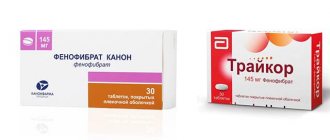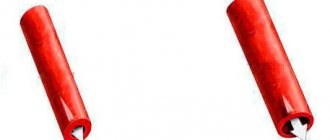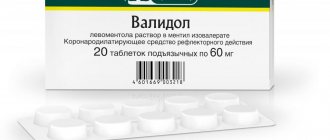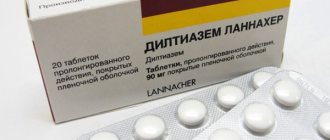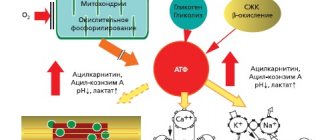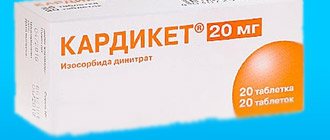The drug Actovegin is well known to healthcare professionals as a universal antihypoxant and neuroprotector. However, there is an opinion that the mechanism of action of ACTOVEGIN has not been sufficiently studied or is unclear. Does the biological origin of the drug really make it difficult to study its mechanism of action? In order to understand this issue, the editors of the PHARMACY Weekly turned to an authoritative specialist in this field - Vitaly Mamchur, Doctor of Medical Sciences, Professor, Head of the Department of Pharmacology, Clinical Pharmacology and Pharmacoeconomics, Vice-Rector for Scientific and Medical Work of the Dnepropetrovsk State Medical Academy.
— You raised a very important issue. Understanding the mechanism of action of the drug plays a key role when the doctor selects a treatment regimen for each individual patient. ACTOVEGIN is an ultrafiltrate from the blood of calves, in which more than 200 physiologically active components have been isolated. Among them are peptides, amino acids, oligosaccharides, eicosanoids, etc.
This composition causes significant difficulties in determining the mechanism of action of the drug as a whole. Despite the fact that the exact mechanism of action has not yet been fully studied, preclinical studies have already established a number of effects, such as insulin-like activity, stimulation of cellular oxygen utilization, and neuroprotective properties [1].
Data from a number of studies conducted in recent years indicate that the claimed clinical effects of the drug ACTOVEGIN are mediated by complex multimodal mechanisms, in particular metabolic, vasoactive and neuroprotective. Let's look at the evidence of some of them in more detail.
Metabolic effects
In diseases accompanied by ischemia and hypoxia, a deficiency of oxygen and glucose develops, which leads to disruption of the synthesis of adenosine triphosphate (ATP) and a decrease in the energy reserves of cells.
Experimental studies have shown that ACTOVEGIN increases the uptake and utilization of oxygen and, as a result, improves energy metabolism and cell resistance to hypoxia [1–4]. In addition, ACTOVEGIN activates the glucose transporters GLUT1 and GLUT4, which, for example, in cerebrovascular diseases can lead to improved glucose transport across the blood-brain barrier [4].
The presence of such a mechanism was confirmed in a clinical study by D. Ziegler et al (2009), in which the administration of ACTOVEGIN in patients with polyneuropathy associated with type II diabetes mellitus significantly led to a decrease in the level of glycosylated hemoglobin (HbA1C) compared to placebo [5].
Side effects
The frequency of side effects was determined according to the classification of the Council of International Organizations of Medical Sciences (CIOMS): very often (≥1/10); often (≥1/100 to <1/10); uncommon (≥1/1000 to <1/100); rare (≥1/10,000 to <1/1000); very rare (<1/10,000); frequency unknown (cannot be estimated from available data).
From the immune system: rarely - allergic reactions (drug fever, symptoms of shock).
From the skin and subcutaneous tissue: rarely - urticaria, sudden redness.
Neuroprotective effects
Recently, several studies have been conducted to examine the neuroprotective effects of ACTOVEGIN and its ability to increase neuronal survival.
An in vitro study conducted in cultured primary rat hippocampal neurons demonstrated the neuroprotective and regenerative properties of the drug ACTOVEGIN [6]. Typically, the number of cultured neurons decreases sharply as a result of apoptosis. However, after 10 days in culture under optimal conditions, an ACTOVEGIN dose-dependent increase in the number of viable neurons was noted (2.4 times more compared to the control) (Fig. 1).
Rice. 1
Increasing the dose of ACTOVEGIN significantly increases the number of surviving neurons in rats [6]
*p < 0.001 compared to cells that were not treated.
Similar effects have been noted in the peripheral nervous system of rats with severe symptoms of diabetic neuropathy [7]. Administration of ACTOVEGIN at a dose equivalent to the human clinical dosage resulted in a reduction in peripheral neuronal degeneration caused by diabetes mellitus. At the end of the study, ACTOVEGIN increased the density of intraepidermal nerve fibers (IENF) by 32% (Fig. 2) and restored the reduced speed of nerve impulse conduction in the sensory fiber to 91% (Fig. 3).
Rice. 2
ACTOVEGIN significantly increases the density of VENV in vivo compared to the control group [7]
*p < 0.005 compared with the streptomycin/saline group.
Rice. 3
ACTOVEGIN restores sensory nerve conduction velocity in vivo compared to the control group [7]
*p<0.005; #<0.05 compared to the streptomycin/saline group at the corresponding time point.
Preclinical studies have also demonstrated that the effect of the drug ACTOVEGIN reduces the intensity of apoptosis [8]. This effect was dose-dependent (Fig. 4).
Rice. 4
In the presence of β-amyloid 25–35 (apoptosis inducer), ACTOVEGIN dose-dependently reduces the level of apoptosis compared to untreated cells [6]
***p<0.001; **p<0.01.
The effect of the drug ACTOVEGIN on oxidative stress was revealed. As a result of the studies, a significant decrease in the amount of reactive oxygen species, and consequently, the influence of oxidative stress in an environment containing ACTOVEGIN was noted (Fig. 5) [6].
Rice. 5
Tertiary butyl hydroperoxide (TBHP) promotes cellular oxidative stress (A) by dose-dependently increasing reactive oxygen species [ROS]. ACTOVEGIN reduces the manifestations of oxidative stress compared to the control group, which was not exposed to TBHP (B) [6]
***p<0.001; *p<0.05.
Currently, studies are being conducted on the effect of the drug ACTOVEGIN on microcirculation. Some of these works have already been published [9].
Below is a far from complete list of the effects of the drug ACTOVEGIN, established during preclinical studies:
- ACTOVEGIN has a complex pleiotropic mechanism of action with metabolic, neuroprotective and vasoactive effects;
- metabolic activity consists of activating glucose transporters, as well as increasing oxygen utilization, which leads to an improvement in the energy state of the cell;
- neuroprotective activity is manifested in a decrease in the severity of apoptosis and a decrease in the pathological effects of oxidative stress;
- effects on microcirculation include improvements in capillary blood flow and metabolic activity of the microvascular endothelium.
Thus, the metabolic and neuroprotective effects obtained in experimental studies are confirmed by the results of previously conducted clinical studies and indicate that ACTOVEGIN has significant potential for the treatment of diseases accompanied by ischemia and hypoxia, in particular, neurodegenerative diseases.
Press service of “APTEKA Weekly”
Dosage
The drug is taken orally before meals. Do not chew the tablet, take it with a small amount of liquid.
In the acute period of ischemic stroke (starting from days 5-7) - 2000 mg/day intravenously, up to 20 infusions, switching to tablet form, 2 tablets. 3 times/day (1200 mg/day). The total duration of treatment is 6 months.
For dementia - 2 tablets. 3 times/day (1200 mg/day). The total duration of treatment is 20 weeks.
For peripheral circulation disorders and their consequences - 1-2 tablets. 3 times/day (600-1200 mg/day). Duration of treatment is from 4 to 6 weeks.
For diabetic polyneuropathy - 2000 mg/day IV drip, 20 infusions with switching to tablet form, 3 tablets. 3 times/day (1800 mg/day). Duration of treatment is from 4 to 5 months.
List of used literature
1. Buchmayer F., Pleiner J., Elmlinger MW et al. (2011) Actovegin(R): a biological drug for more than 5 decades. Wien. Med. Wochenschr.; 161:80–88.
2. Kuninaka T., Senga Y., Senga H. et al. (1991) Nature of enhanced mitochondrial oxidative metabolism by a calf blood extract. J Cell. Physiol.; 146: 148–155.
3. Bachmann W., Forster H. and Mehnert H. (1968) Experimental studies in animals on the effect of a protein-free blood extract on the metabolism of glucose. Arzneimittel-Forschung/Drug Research; 18: 1023–1027.
4. Machicao F., Muresanu DF, Hundsburger H. et al. (2012) Pleiotropic neuroprotective and metabolic effects of Actovegin's mode of action. J. Neurol. Sci.; 322:222–227.
5. Ziegler D., Movsesyan L., Mankovsky B. et al. (2009) Treatment of symptomatic polyneuropathy with Actovegin® in Type 2 diabetic patients Diabetes Care; 32:1479–1484.
6. Elmlinger MW, Kriebel M. and Ziegler D. (2011) Neuroprotective and anti-oxidative effects of the hemodialysate actovegin on primary rat neurons in vitro. Neuromolecular. Med.; 13: 266–274.
7. Dieckmann A., Kriebel M., Andriambeloson E. et al. (2012) Treatment with Actovegin(R) improves sensory nerve function and pathology in streptozotocin-diabetic rats via mechanisms involving inhibition of PARP activation. Exp. Clin. Endocrinol. Diabetes; 120: 132–138.
8. Kubo T., Nishimura S., Kumagae Y. et al. (2002) In vivo conversion of racemized beta-amyloid ([D-Ser 26]A beta 1-40) to truncated and toxic fragments ([D-Ser 26]A beta 25-35/40) and fragment presence in the brains of Alzheimer's patients. J. Neurosci. Res.; 70:474–483.
9. Fedorovich AA (2012) Non-invasive evaluation of vasomotor and metabolic functions of microvascular endothelium in human skin. Microvasc. Res.; 84:86–93.
Introduction
Over the past decades, a tremendous amount of new information has been obtained at the molecular level about the structural and physiological mechanisms of cell proliferation, differentiation, maturation and degeneration.
Many experimental animal models of various neurological diseases have been created to study the mechanisms of cell death and identify potential targets for neuroprotective and neuroreparative therapy. Based on a new understanding of the genetic and molecular mechanisms of cerebral damage, modern methods of neuroprotection were successfully reproduced in animals and quickly introduced into clinical practice. At the same time, many randomized, placebo-controlled studies on neuroprotection in humans have not yielded positive results in acute stroke and chronic forms of cerebrovascular diseases. Moreover, some studies were stopped early due to an increased risk of adverse effects and lack of therapeutic benefit. Of the numerous drug substances tested in experimental models, only a few have been studied in clinical settings and proven to be safe. Among them are neurotrophic and membrane stabilizing agents, antioxidants, blockers of potassium and calcium channels, glutamate receptors, caspase inhibitors and drugs of biological origin with a multimodal effect.
Biological drugs are the focus of pharmaceutical companies today. However, presentations and drugs that have been on the market for a long time deserve no less attention. Thus, vaccination, which appeared in European medicine about 200 years ago, has achieved unprecedented success. Despite existing shortcomings and side effects, its achievements are enormous, such as the eradication of smallpox as a result of the World Health Organization's initiative in the late 1950s. global vaccination program. New insights are making it possible to begin using vaccination in the fight against a number of tumors, although this therapy still has to move from scientific development to clinical trials. Examples of other “old” biological drugs include monoclonal antibodies (for which K. Niels Jerne, J. F. Kohler and Cesar Milstein were awarded the Nobel Prize in 1984) and a number of blood products such as factor VIII concentrates and calf blood hemodialysate called Actovegin.
Actovegin is a transparent aqueous solution of a yellowish-brownish color. It is devoid of protein, but contains substances that give a positive reaction with ninhydrin. Being a blood dialysate, Actovegin contains its characteristic salts and microelements. The complex composition of this mixture makes it difficult to isolate a single active principle. Initially, they were considered low-molecular peptides (2% dry matter) and nucleic acid derivatives; however, a number of other low-molecular substances also claim this role (see below).
Indications for the use of calf blood hemodialysate are circulatory and cerebral trophism disorders (ischemic strokes, traumatic brain injuries), peripheral blood flow disorders and related diseases (angiopathy and trophic ulcers of the legs), skin transplantation, burns (including chemical ), wound healing disorders (sluggish wounds, bedsores), prevention and treatment of radiation damage to the skin and mucous membranes. Despite the variety of indications, the activity of the drug is easily associated with a trophic effect on tissue.
In this review, we will focus on the pharmacodynamics of Actovegin, a drug that was previously used for many diseases and today is returning to widespread practice, becoming the object of fundamental and clinical research. After a short introductory review on the preparation process of the drug, we will consider modern ideas about the mechanism of its action. After this we will focus on the practical use of calf blood hemodialysate in the form of a summary of some clinical trials.

